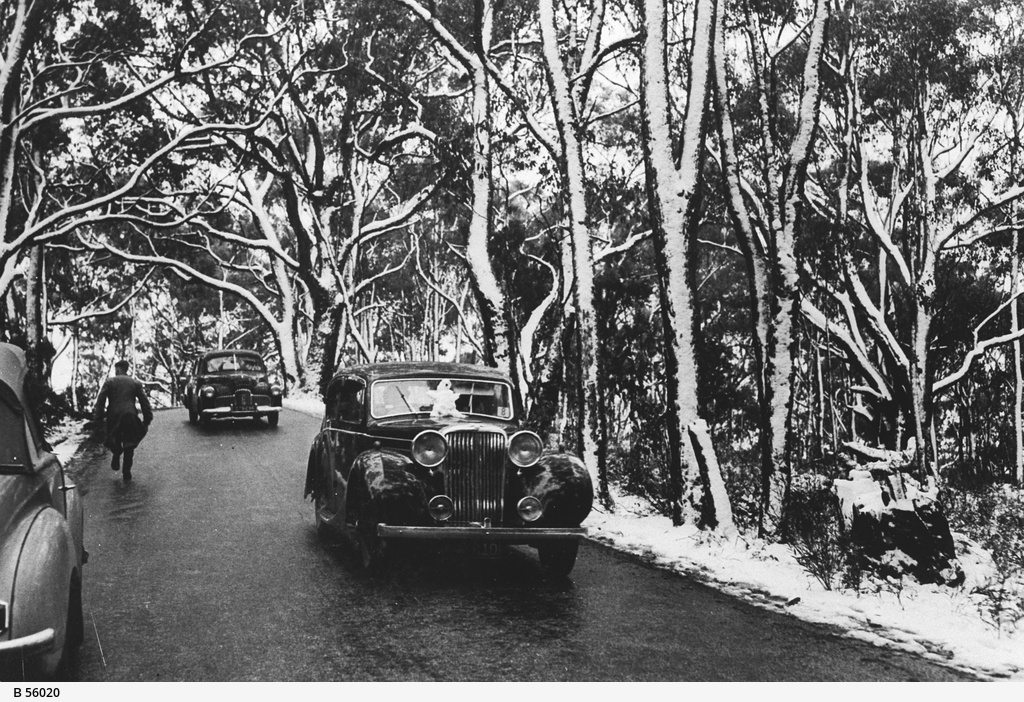Picture: Snowball fight at Mount Lofty, August 29, 1905. Credit: Part of the Mount Lofty Collection. State Library of South Australia (B 47608).
CLEX researchers have developed Australia’s longest daily temperature record, identifying a decrease in cold extremes and an increase in heatwaves since 1838.
Lead researcher Dr Joelle Gergis a lead Associate Investigator from The Australian National University (ANU) says the study examined daily records from around Adelaide.
“We’ve been able to place recently observed daily temperature extremes in a longer context by using historical weather records from the Adelaide region,” she said.
“Our analysis shows that snow was once a regular feature of southern Australian climate. As Australia continues to warm, we have seen a clear decrease in cold extremes and an increase in heatwaves.”
While most other historical studies of Australia’s climate have looked at annual or monthly values, the new record means it is now possible to look at daily extremes.
“This is important as the impact of global temperature increases on human health, agriculture and the environment are most keenly felt through extreme events like heatwaves,” Dr Gergis said.
Researchers used hundreds of historical newspapers and documents to reconstruct the impact of past temperature extremes. The study focused on the previously undescribed pre-1910 period to extend the Bureau of Meteorology’s official record.
For example, an outbreak of cold air on June 22, 1908, delivered widespread snow across the hills surrounding Adelaide. The Express and Telegraph newspaper reported:


Many people made a special journey from Adelaide by train, carriage, or motor to revel in the unwonted delight of gazing on such a wide expanse of real snow, and all who did so felt that their trouble was amply rewarded by the panorama of loveliness spread out before their enraptured eyes.
The Express and Telegraph. June 22, 1908.
From December 26-30, 1897, Adelaide was gripped by a heatwave that included five days over 40ºC. Newspapers reported heat-related deaths, agricultural damage, animals dying in the zoo, bushfires, and even “burning hot pavements scorching the soles of people’s shoes”.
On December 31, 1897, the South Australian Register wrote prophetically of future Australian summers: “May Heaven preserve us from being here when the ‘scorchers’ try and add a few degrees to the total.”

“Historical documentary records provide an understanding of the societal impacts extreme events had on people during pre-industrial times,” Dr Gergis said.
“South Australia is the nation’s driest state, and Adelaide is the most heatwave-prone city in Australia. Heatwaves are the most lethal weather extreme.”
Between 1844 and 2010 extreme heat has contributed to over 5,332 deaths in Australia, and South Australia had the highest historical heat-related death rate of any state or territory from 1907 to 2010.
Dr Linden Ashcroft a CLEX Associate Investigator from the University of Melbourne says we can use historical weather records to learn what Australia’s climate was like before official meteorological records began in the early 1900s.
“And there are tomes of old, decaying journals that haven’t been recovered and analysed by climate scientists yet,” Dr Ashcroft said.
Dr Gergis and Dr Ashcroft were fortunate enough to dust-off even more forgotten old weather journals recently. Their next goal is to transcribe new discoveries with the help of citizen scientists to fill a gap in Adelaide’s temperature record from 1843–1847. Once complete, it will be the longest continuous daily temperature record in Australia, and one of the longest in the Southern Hemisphere.
Their research has been published in Climate Dynamics.
For more information on the study and citizen science programs, visit the Climate History Australia website at www.climatehistory.com.au.
About Climate History Australia Climate History Australia is a landmark initiative to reconstruct Australian climate over past centuries. Using historical records, our team pieces together past climate variability and extremes to understand their influence on Australian society over time. Climate History Australia is based at the ANU, working with researchers across the country and around the world. www.climatehistory.com.au
